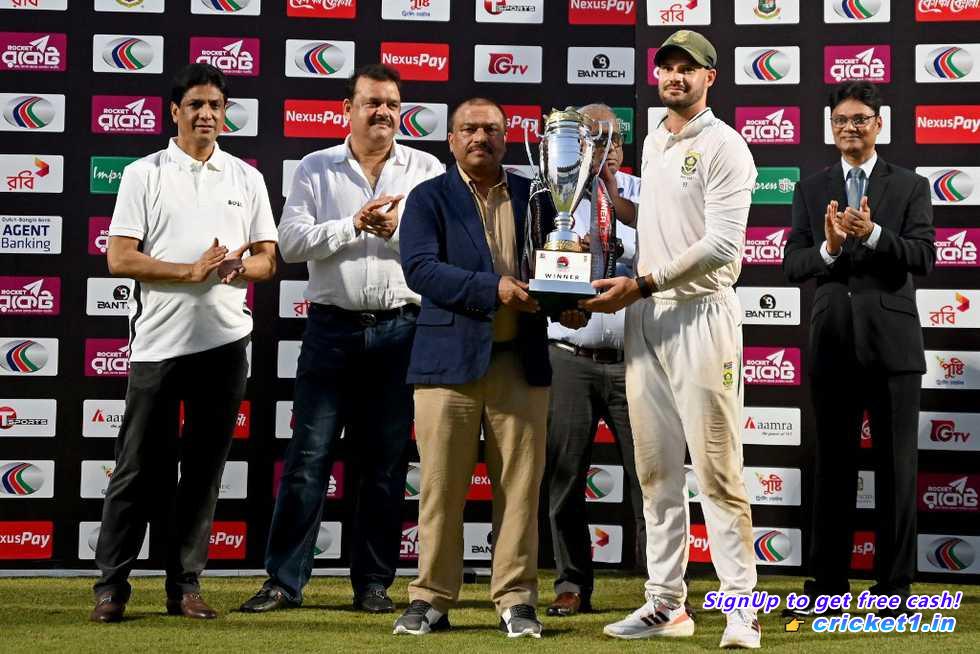
South Africa’s cricket activities have taken on a new presence, juggling time zones, immense distances, and an increasing demand on player schedules; these elements are vital in the contemporary landscape of the sport. The South African squad announcement for a T20I series against India emerged on Thursday amidst their Test match in Chattogram against Bangladesh. As South Africa navigated their path toward victory, discussions were held 15 minutes before tea regarding a series they aim to continue their triumphs against India next week. But the distances in cricket’s current makeup are not just geographical; they stretch into the management of resources as team structures compete in concurrent series or formats happening thousands of kilometers apart.
The scheduling and workload challenges in cricket’s expanding calendar are accentuated by South Africa’s forthcoming dual responsibilities. By the time the final encounter of the T20I series against India kicks off at Johannesburg’s Wanderers Stadium, India will have already begun their red-ball preparations a significant six time zones away in Perth. Such scenarios illustrate cricket’s modern quandaries as teams grapple with fielding top squads across varying formats simultaneously or nearly concurrently.
South Africa is set to engage in a mere 12 Test matches during the 2023-25 World Test Championship (WTC) cycle, the same as Bangladesh and comparatively lesser than the 22 matches England will play or the 19 contests slated for both Australia and India. Despite this, South Africa’s activity across all formats is relatively robust, having already participated in 30 matches throughout the year, close on the heels of England and Australia with their 31, and not far behind India’s 35-game lineup.
To cope with an increasingly cluttered schedule, South Africa has enforced a strategy focusing on conditioning their fast bowlers. This has led to the planning of “conditioning blocks,” spanning up to 12 weeks, to maintain their athletes in peak form. Such preparation means that Gerald Coetzee and Marco Jansen were absent from national duty since May and June, respectively, returning only recently through a domestic T20 competition in readiness for the India series. Simultaneously, prominent paceman Kagiso Rabada has been rested for this T20I engagement.
Coach Rob Walter outlines the dual aims of expanding South Africa’s player base to sustain two competitive squads and stressing the meticulous management required in this era of hectic scheduling.
. The plan demands fostered development of over 25 players who can confidently perform and secure victories at international standards, thus enhancing flexibility in team selection and management. Walter emphasizes the growing intersection of different formats, invoking the necessity for strategic foresight in player welfare and optimal performance.
A critical example is Kagiso Rabada, the leading Test bowler, whose elite status and skills are in demand across Tests, ODIs, T20Is, and lucrative franchise leagues that far outpace transactions by Cricket South Africa (CSA). The management of such pivotal assets falls to Walter and his red-ball counterpart, Shukri Conrad, culminating in a calculated decision to prioritize Rabada’s participation in key Test encounters over others.
In discussions specific to individual players, the notable absences of Quinton de Kock, Anrich Nortje, and Tabraiz Shamsi from the T20I roster are due to varying personal and professional circumstances. De Kock, currently opting out of international cricket outside T20Is, remains a potential inclusion should his intentions align in the future. Nortje, focusing on T20 leagues, and Shamsi, who is concentrating on global cricket opportunities, illustrate the diversified and individualized paths within the sport.
Other cricketing nations, like England, also grapple with strenuous timetables. England’s white-ball series against Australia seamlessly transitioned into a Test series against Pakistan, prompting quick personnel shifts between formats. The awareness and balancing act required to maintain competitive edge without overburdening players underscore the particulars of current international cricket.
As the cricket world adapts, technological advancements streamline communications across continents, perhaps unwittingly shrinking the perceived distances. Following a victory in Chattogram, South Africa seamlessly transition focus to its T20I series at varying locales country-wide. Such adaptation illustrates not merely endurance but ambition in navigating this brave new cricketing landscape, which presents unmatched challenges and opportunities alike.

